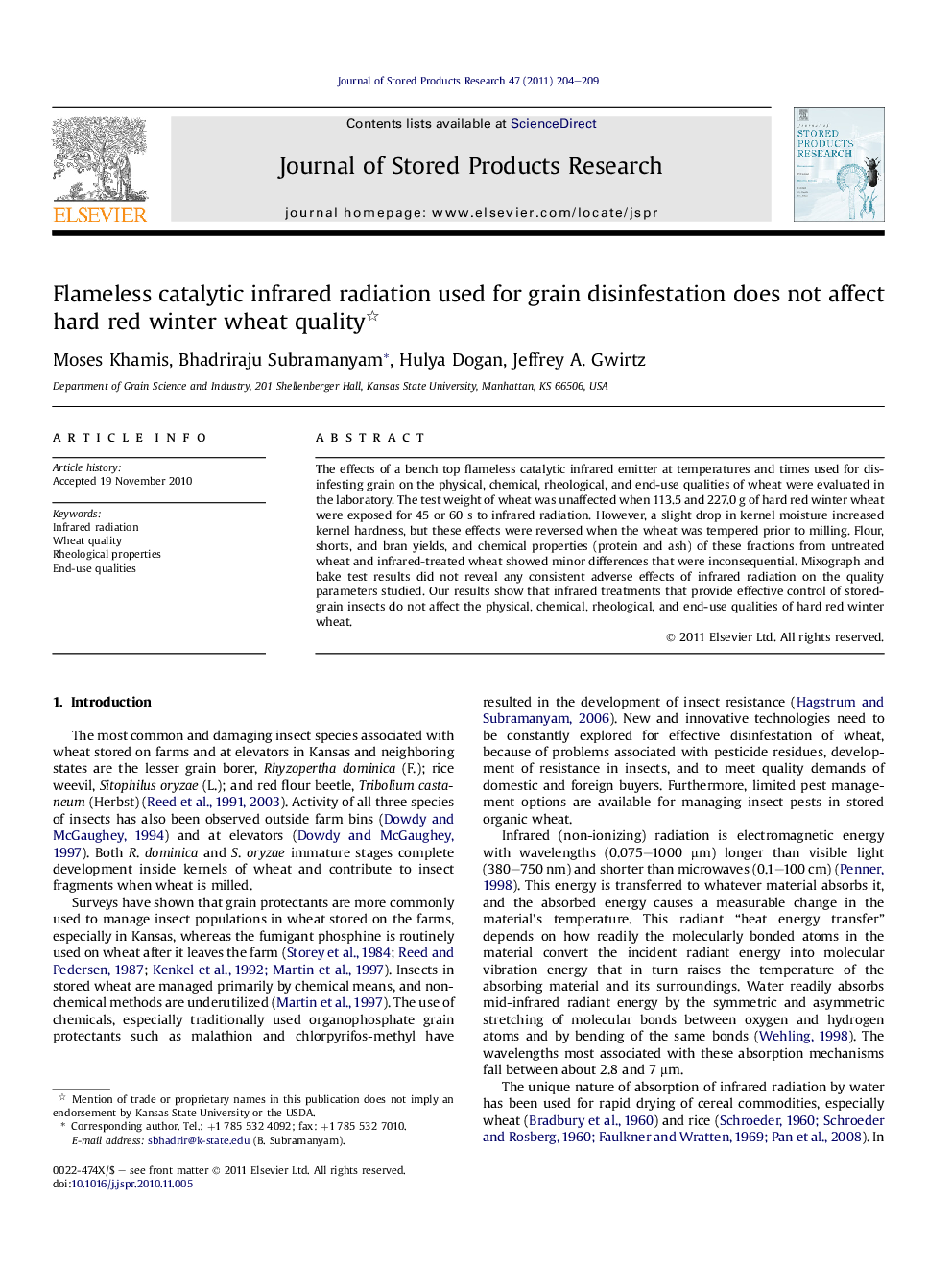| Article ID | Journal | Published Year | Pages | File Type |
|---|---|---|---|---|
| 4517208 | Journal of Stored Products Research | 2011 | 6 Pages |
The effects of a bench top flameless catalytic infrared emitter at temperatures and times used for disinfesting grain on the physical, chemical, rheological, and end-use qualities of wheat were evaluated in the laboratory. The test weight of wheat was unaffected when 113.5 and 227.0 g of hard red winter wheat were exposed for 45 or 60 s to infrared radiation. However, a slight drop in kernel moisture increased kernel hardness, but these effects were reversed when the wheat was tempered prior to milling. Flour, shorts, and bran yields, and chemical properties (protein and ash) of these fractions from untreated wheat and infrared-treated wheat showed minor differences that were inconsequential. Mixograph and bake test results did not reveal any consistent adverse effects of infrared radiation on the quality parameters studied. Our results show that infrared treatments that provide effective control of stored-grain insects do not affect the physical, chemical, rheological, and end-use qualities of hard red winter wheat.
► Short exposures lasting 45 or 60 s to a bench top flames catalytic emitter, fueled by propane, was shown to effectively kill all life stages of lesser grain borer, rice weevil, and red flour beetle. ► The impact of wheat exposed to short infrared radiation on its physical, chemical, and rheological properties were evaluated. ► Infrared radiation did not adversely affect wheat, physical, chemical, and rheological properties studied.
